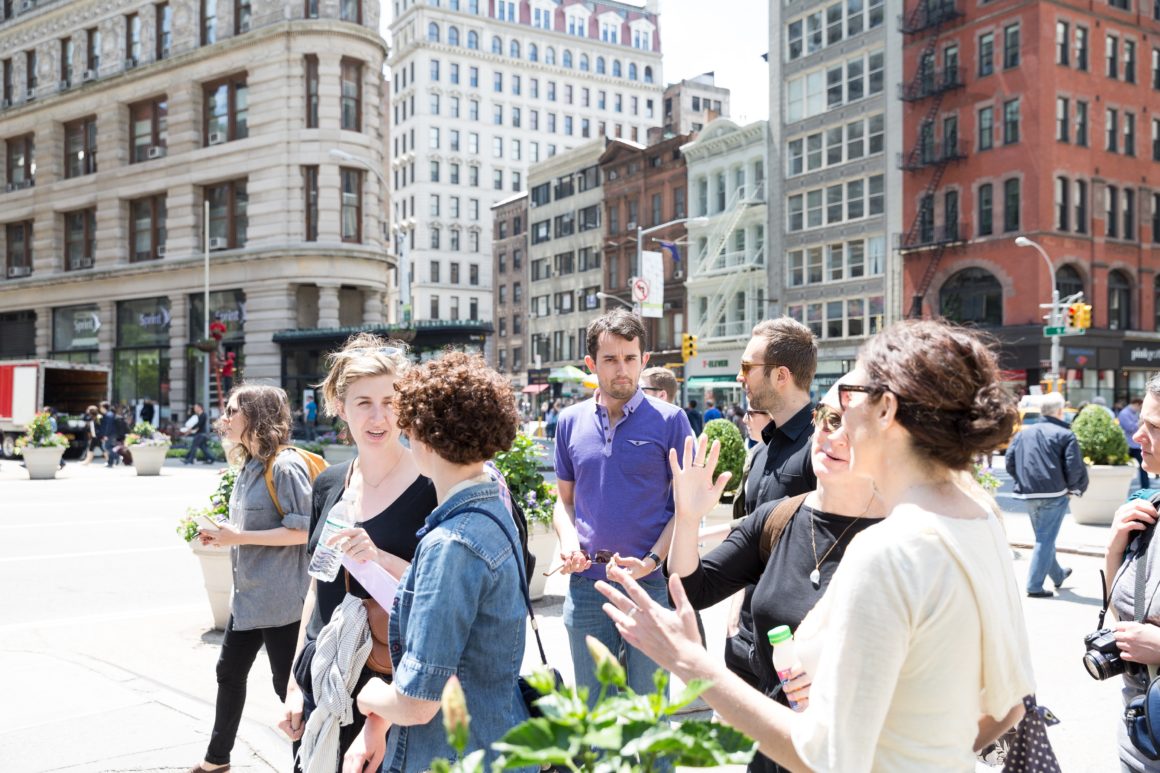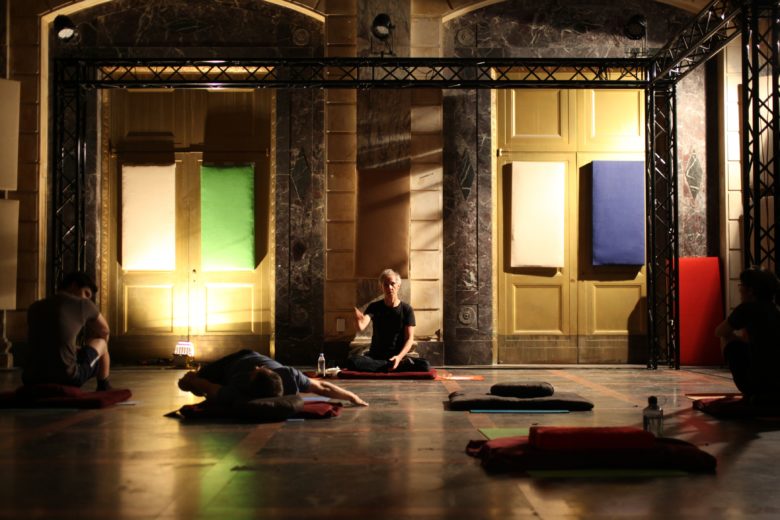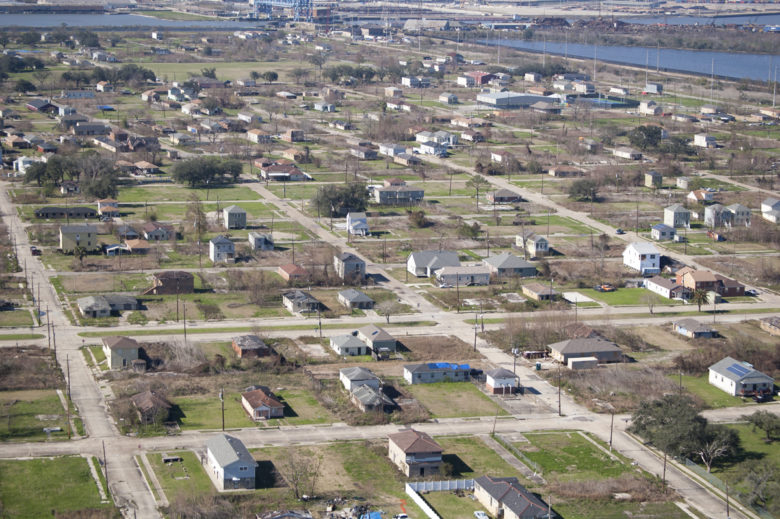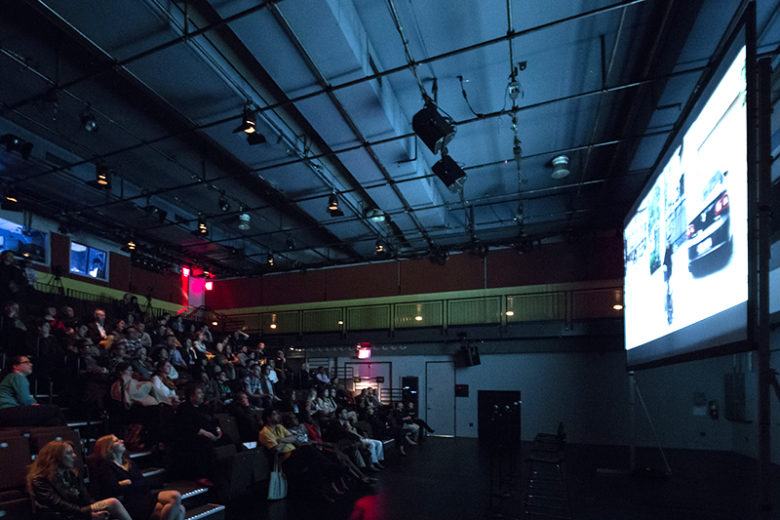
A breeze is blowing through New York’s Madison Square Park, and I’m standing in a circle of people—my tour group—noticing how the cool air feels on my skin.
“Close your eyes and just feel what it feels like to stand here,” encourages Jonathan Kaplan, our guide. I notice the weight of my backpack, the pressure on my feet, and the resultant slight ache along my back and through my legs. “A way to tune into the present is to pay attention to your body,” Kaplan relays, explaining that we can only feel physically what we feel in this very moment.
We are in the park to practice mindfulness, a method of using sustained awareness to open oneself up to the full experience of one’s environment—in this case, the loud and smelly, the peaceful, and the exhilarating. A clinical psychologist and author of Urban Mindfulness: Cultivating Peace, Presence, and Purpose in the Middle of It All, Kaplan is guiding me and a group of 15 or so others through a “well-being workshop” hosted by Van Alen Institute as part of its spring Elsewhere series looking at how urban life affects the mind and body.
Kaplan defines sustained awareness as “seeing an experience as it unfolds moment by moment,” a difficult task to be sure, and he notes that we’re often distracted not just by our senses but by our experience of being “elsewhen,” defined as those moments of unawareness when we are lost thinking about yesterday, or tomorrow, often conjuring regret or anxiety. That’s why paying attention to our physical states is crucial, he says, to help us stay in the present.
But, focusing on one thing (like our physicality) is actually closer to typical thought, and true mindfulness is more about a fuller, wider awareness.
Inspired by ever-increasing levels of stress, anxiety, and distraction fatigue, Westerners are steadily adopting Eastern traditions like meditation and mindfulness (yoga is already fully entrenched) as a salve for the ills that affect many urban dwellers. Though it’s impossible to live in a state of continual mindfulness in the city, Kaplan makes sure to note, the practice of it can teach us to clean our mental slates, even if briefly, so that we can better choose how we want to experience the city.


